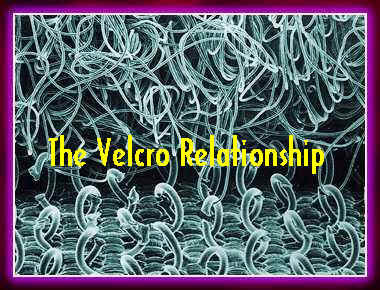
|
Article as published by October 2000, Ken Sinclair |
AutomatedBuildings.com
|
[an error occurred while processing this directive] |

|
Article as published by October 2000, Ken Sinclair |
Building Automation: New Ways of Working
The glue that binds us is dissolving!
[an error occurred while processing this directive]The
status quo in the automated building industry is dissolving, and its traditional
roles are rapidly becoming detached in the major restructuring. Open protocols
and internet/intranet extensions are leading us to less "in control"
relationships that may only exist for the term of a project or the term of
supplied services. These relationships will become more complex, but more fluid,
in the automation projects of the future.
Companies' ability to forge "velcro relationships" that can attach
and detach from project to project as needed will become cardinal for their
survival. As the "glue" rapidly dissolves, parties must reinvent
themselves to gain control of newly expanded (but greatly fragmented) markets.
The industry must reformat quickly to keep up with changes in technology,
business opportunities, and customer expectations.
The Velcro
Relationship
The new automated buildings
industry requires that all players have the ability to create strong bonding
relationships that can form quickly, allow companies to act as one homogenous
unit, then decouple (like velcro) as needed for each project. The convergence of
building automation and information systems (IS) services within a building will
necessitate these partnerships, but IS is not the only velcro relationship area
on the rise.
As standard protocols become the norm, system integrators at several levels will become a reality in every project's implementation. Close interaction with integrators and the building subsystem suppliers, whose equipment will come complete with standard protocol interfaces, will require yet more velcro.
Multi-building owners will organize their buildings so they can be managed nationally or even globally. Their input will become a high priority for each project to provide continuity for their system of virtual management. It is likely that this complex management hierarchy will include several velcro points that will allow service and support contractors quick coupling and decoupling from the project. The task of defining the format of these building services connections is generally uncharted territory, but we do know that it will rest on the internet or intranet backbone.
The controls the contractors installed in the past will be supplied as part of the building subsystems, and the contractor will be left with the daunting task of velcroing the complete system together and making all connections permanent. Not only will all the subsystems require integration with building-wide control strategies, but sophisticated interfacing with the client's IS enterprise will be needed.
The traditional control contractor's function will significantly change from that of being an installation contractor to being an integration coordination specialist who will manage and prove end-to-end functionality. The task of making all implied functionality happen will become extremely important to designers; individuals that can make this happen will find themselves in a lucrative position. Field installation work will almost disappear or migrate to being part of the IS installation.
A New
Generation?
If today's traditional control
contractor does not take on this new, complex task of overall integration, a new
entity of super building system integrators/optimizers will evolve. The new
control entity will evolve to provide integration, engineering, and coordination
plus proof of end-to-end functionality.
Old or new, these groups will forge new relationship, both velcro and permanent, with many new players. The new players to the industry will include specialists from a group of fields including (at the minimum) IS, internet service providers, Lon and/or BACnet Integrators, telephony systems, security, fire and life safety, video, and others to meet the requirements of each project. Either you will coordinate the project, or you will be coordinated into the project.
For this scenario to successfully evolve, not only will the control contractor have to under go a metamorphosis, but the architect, engineer, and owner will also have to forge new velcro relationships. The new velcro team will provide close and competent input to ensure that the nouveau building automation is all it can be. Conceptual and design work will now cross over traditional boundaries and equipment limitations, greatly increasing complexity of automation building design.
[an error occurred while processing this directive]
[Click Banner To Learn More]
[Home Page] [The Automator] [About] [Subscribe ] [Contact Us]